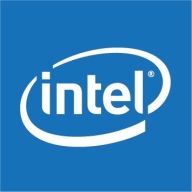

Intel Server System and Dell PowerEdge XR-Series compete in the server hardware market for enterprise solutions. Dell PowerEdge XR-Series may offer superior integration due to its enhanced features, while Intel Server System stands out for its pricing and customer support, making it a more cost-effective option.
Features: Intel Server System offers powerful processing capabilities, modular design for easier upgrades, and scalability. Dell PowerEdge XR-Series is designed for extreme environments with robust security and management tools, appealing to industries with specific performance needs. Dell is adapted for specialized applications, whereas Intel emphasizes flexibility and performance optimization.
Ease of Deployment and Customer Service: Dell PowerEdge XR-Series provides straightforward deployment with comprehensive support resources, focusing on streamlined setup in challenging environments. Intel Server System requires more initial investment in configuration but benefits from strong customer service channels. Dell shows deployment efficiency in specific conditions, while Intel offers broader service support.
Pricing and ROI: Intel Server System is generally more affordable, with lower setup costs, attractive for budget-conscious businesses seeking a solid return on investment. Dell PowerEdge XR-Series, positioned at a higher price point, justifies costs with advanced features that enhance long-term value in niche markets. Intel appeals in cost-effectiveness, contrasted with Dell’s value in specialized feature investment.
| Product | Market Share (%) |
|---|---|
| Intel Server System | 4.6% |
| Dell PowerEdge XR-Series | 0.6% |
| Other | 94.8% |

Dell PowerEdge XR-Series transforms edge computing by offering high-performance servers equipped for environments outside traditional data centers, designed to deliver when it counts.
PowerEdge XR-Series is crafted to endure harsh and unpredictable conditions with a robust focus on security, remote manageability, and intelligent system monitoring. It excels in IoT, manufacturing, retail, and telecommunications, providing a cost-effective, energy-efficient solution for edge infrastructure. These compact, rugged servers are built to handle edge-based workloads, facilitating real-time data processing and analysis at the source.
What are the key features of PowerEdge XR-Series?Industries such as IoT, manufacturing, retail, and telecommunications implement Dell PowerEdge XR-Series to handle edge-based workloads effectively. Its reliability and adaptability make it a vital component for processing data in real time, providing significant advantages in environments where data-driven decision-making is key.
Storage is simple with the Intel Storage System JBOD2000 family, a 2U form factor system with support for twelve 3.5" LFF or twenty-four 2.5" SFF drives with a single or multi-cable connectivity. The JBOD2000 family includes redundant, hot-swap fans and the option for redundant, hot-swap power supplies. The JBOD2000S2 products support 6Gb/s SAS/SATA connectivity via industry-standard SFF-8088 connectors with the latest JBOD2000S3 version supports up to 12 Gb/s SAS connectivity via industry standard SFF-8644 connectors. All these JBOD offerings are designed to provide highly available and easily expandable storage for Intel servers at an affordable price point.
We monitor all Rack Servers reviews to prevent fraudulent reviews and keep review quality high. We do not post reviews by company employees or direct competitors. We validate each review for authenticity via cross-reference with LinkedIn, and personal follow-up with the reviewer when necessary.